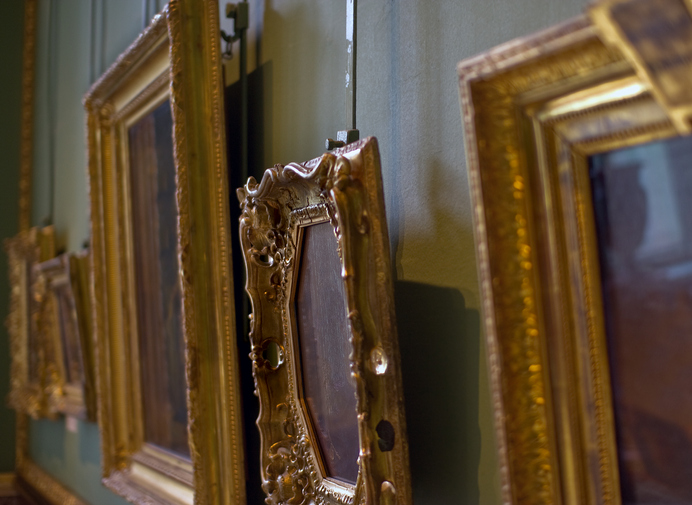The Evolution of Art

Authored by AXA XL Global Practice Leader, Fine Art Insurance, Jennifer Schipf
The art market has weathered well a pandemic storm. What happens now that the world returns to business as usual? A conversation with AXA XL’s Jennifer Schipf.
As global chief underwriting officer for AXA XL’s Fine Art & Specie division, Jennifer Schipf has been an active participant in the art world for well over 25 years. Through a pandemic, which drove the art world online and challenged galleries to innovate, she has seen evolution and, ironically, a bit of status quo. From the rise of NFTs (nonfungible tokens) to virtual auctions, Jennifer has participated in and been part of plenty of evolution – and plenty of traditional art activities. Here, Jennifer discusses the industry’s return to live events and interactions.
The art industry went through some sizable shifts as the pandemic forced everyone to reimagine business and find new ways to attract customers and at least keep sales level. With the pandemic restrictions lifting and business beginning to return to normal operations, what are you seeing happening in the art world?
Jennifer Schipf: You know, as much as things change, they really do stay the same. People still love art. And as much as we are all interested in new mediums, digital art, NFTs (non-fungible tokens or digital assets), figurative, art is still very important.
What is exciting is the diversity of the artists and their works that are emerging. Through the sponsorship of the AXA Art Prize, which is in its fifth year, we have seen artists from very diverse backgrounds exhibiting from all over the country, including undergraduate students. In fact, the range that some undergraduates are demonstrating reveals how they see themselves in America, how they see their communities, how they comment on what’s happening around them, whether it’s political, social, community, personal, academic, or commercial. That youth voice is ever-changing.
As we saw, the art work had to shift dramatically during the pandemic. Art Basel sets the 2020 online sales figures at $12.4 billion globally. Has that shift resulted in a slower return to in-person art events?
Jennifer Schipf: The shift to online auctions and purchases definitely accelerated tremendously through the pandemic, but art fairs have rebounded, and collectors are enthusiastically returning now. Art fairs are feeling very much pre-pandemic in terms of participants, attendees, and sales. While fairs don’t publish their sales, the activity is certainly there, and there is interest from buyers and collectors to return to the shows.
Also, we are hearing lots of enthusiasm from people in all segments about returning to the art fairs and enjoying reconnecting. I wondered how much people would want to get back to the events in person and whether art fairs and exhibitions would suffer because people became accustomed to staying home and enjoying digital content. But as much as the digital capabilities were a blessing and quite a godsend during the pandemic, buyers plan to live with art, so they want to see it in person.
In what other ways are you seeing people reconnect or perhaps connect for the first time?
Jennifer Schipf: Right before the pandemic lockdowns, we had hosted a luncheon for all the exhibiting artists that year. It was the first time we’d done so. Afterwards, the feedback we received from the students was eye-opening. They talked about how much they enjoyed meeting each other and how it gave them an opportunity to network and build a bit of a community among their cohort of peers exhibiting at the same show. It was great to be able to support artists by both increasing the visibility and awareness of their works, but also to support them as artists and provide them with a chance to foster relationships and build a supportive community around them.
In what other ways is AXA XL involved in promoting art and artists?
Jennifer Schipf: We participate in numerous shows around the world, and we sponsor quite a few, including (but not limited to) Art Toronto, the Art Dealers Association of America (ADAA) show, Art Basel, TEFAF and smaller fairs such as INK Miami. In sponsoring and attending so many fairs, we look to take an active role in promoting art and artists.
We are eager to see future rising stars, which is exciting. We have had a few of our exhibitors go on to some very interesting careers, either commissions or work sold with very prominent galleries and dealers. It allows for an early look at what will be an important part of the art world in the future.
Any advice for art buyers?
Jennifer Schipf: Just buy what you love. Please don’t try to imagine what it will be worth in the future because that often doesn’t work out. Instead, buy what you love and what you want to live with. Enjoying art you love is the best investment of all.
Also, don’t overlook the works of lesser-known artists or even students. There is a whole world of diverse artists who have a lot to say about a lot of different things, not just the traditional artists that we see in a lot of the institutions. In fact, there is a wonderful effort by museums and institutions to increase diversity and inclusion in the art world. That is good news for the entire industry. There are so many different cultural viewpoints coming from younger artists. Students are very much worth paying attention to. They have a lot to say and there’s plenty of great content, and we are trying to include them in that broader art world dialogue.



